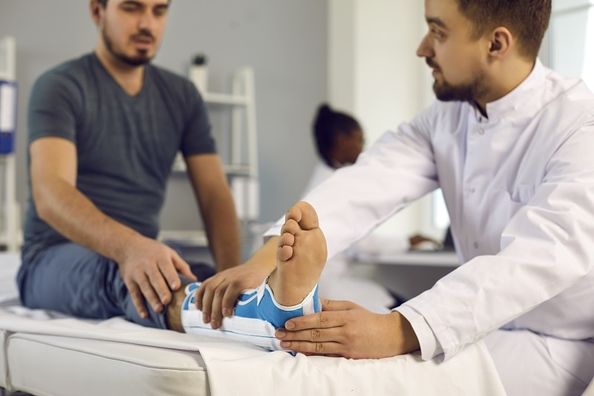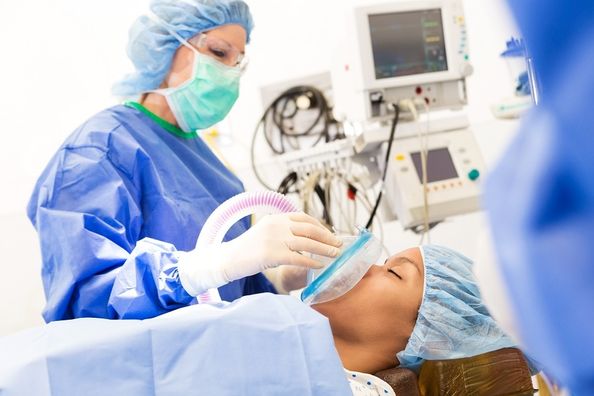We’ve all seen those dramatic moments on TV medical shows — some injuries are real, others wildly exaggerated. But what they don’t show is how to decide whether to head to the emergency room or an immediate care center (also known as urgent care). So when you’ve accidentally cut yourself or your stomach is staging a full-scale rebellion, you might not know where to go.
In some cases, you already know the drill. Anything life-threatening requires a trip to the emergency room ASAP, while a stubborn stuffy nose is unlikely to need lifesaving treatment. It’s the in-betweens that get a little trickier.
At-a-Glance: Immediate Care vs. Emergency Room
- Immediate Care treats non-life-threatening issues such as minor cuts, sprains, ear infections, flu, UTIs, rashes, and closed fractures.
- Emergency Room is for life-threatening conditions like chest pain, stroke symptoms, severe bleeding, major injuries, seizures, or difficulty breathing.
- Ask yourself: How severe are my symptoms, can they wait, and do I know the cause? These guide whether to choose immediate care or the ER.
- Immediate Care benefits: shorter wait times, lower costs (5 – 10x less than ER), evening and weekend hours, and convenient locations.
- When unsure, stay safe: if symptoms feel severe or life-threatening, call 9−1−1 or go directly to the emergency room.
Here’s what your favorite medical show probably isn’t telling you about when to go to immediate care vs. when to go to the emergency room.
Immediate Care or Emergency Room: Making the Choice
There are several questions to ask yourself before making a decision.
Question #1: How bad are my symptoms?
One of the most important things to consider when choosing between immediate and emergency care is your symptoms.
Immediate care is great for minor health concerns that are not life-threatening. Consider immediate care if you have:
- Closed fractures (broken bones where your skin is still intact)
- Digestive issues, like vomiting, diarrhea, or mild to moderate stomach pain
- Illnesses like sore throats, ear infections, or sinus infections or cough, cold, and flu symptoms
- Injuries like sprains, strains, or minor cuts
- Mild allergic reactions
- Mild dehydration
- Pneumonia
- Skin conditions like rashes, minor burns, skin infections, or insect bites
- Urinary tract infections
The emergency room is for life-threatening situations like heart attack or stroke. Get to the emergency room or call 9−1−1 immediately if you experience:
- Chest pain or pressure
- Difficulty breathing or shortness of breath
- Head or spine injury
- Large wounds or an open fracture (when a broken bone is sticking out through your skin)
- Seizures
- Severe allergic reaction
- Severe stomach pain, especially with fever
- Sudden and severe weakness, headache, or inability to move
- Sudden vision loss
- Symptoms of a stroke, like sudden weakness or numbness (especially on one side of your body), sudden confusion, or difficulty speaking
- Uncontrolled bleeding
Question #2: Can my symptoms wait?
When you’re in the throes of a nasty stomach bug, it can feel like treatment can’t wait – but in most cases, a bout of throwing up and a mild stomachache doesn’t need emergency care.
At the same time, the opposite problem can happen. If your symptoms are severe or intense, avoid the temptation to tough it out and see where it goes. For instance, if you tend to have a high pain tolerance, you might think that a very bad stomachache is something you can just wait out. However, it could actually be a sign of something more serious or even life-threatening, like a burst appendix.
In general, immediate care centers are not open 24 hours. So if you have symptoms, ask yourself if they truly can wait until an immediate care center opens.
South Bend Clinic’s Immediate Care Centers are open on evenings and weekends. You can choose to walk in at your convenience. Find an Immediate Care Center near you.
Question #3: What caused my symptoms?
It’s not always possible to know what brought on your symptoms or how you got hurt. But if you do know, that can make a difference as to where you go for care.
Some examples of times when you need emergency care include:
- A head injury that causes:
- Difficulty walking or balancing
- Headache that gets continuously worse
- Loss of consciousness
- One pupil to appear bigger than the other
- Seizures
- Severe confusion, such as not recognizing people or places
- Severe dizziness
- Slurred speech
- Vomiting more than one time
- Watery and clear discharge from your ears or nose, or bleeding from your ears
- Weakness, tingling, or numbness in your legs or arms
- A back or neck injury that causes:
- Difficulty walking or standing up
- Head or body to be in an unusual or unnatural position
- Headache, neck pain, or neck stiffness that won’t go away
- Inability to move your arms or legs
- Loss of bladder or bowel control
- Numbness or tingling sensations radiating through your arms or legs
- Symptoms of shock (pale and clammy skin, gray or blue lips or fingernails, dazed or semi-conscious appearance)
- Unconsciousness
- Weakness in your neck, back, or limbs
- An injury from a gunshot or a severe car accident
- A reaction that occurs after eating something you know you have a life-threatening allergy to, such as peanuts

The Benefits of Immediate Care
If your symptoms or injury are not life-threatening, but you’re still weighing your options, think about the other benefits of choosing immediate care.
Immediate care visits typically cost significantly less than emergency room ones. In fact, going to the emergency room can cost you 5 to 10 times more than it would cost you to go to an immediate care center.
They are also a great middle ground when you need care sooner than you can get an appointment with your provider but don’t need emergency care.
Convenience is also a key reason why you may want to choose immediate care. Immediate care centers might not be open 24⁄7, but they often have evening, weekend, and early morning hours. They usually have much shorter wait times, and many allow you to schedule an appointment so you’re not spending too much time in the waiting room. And with several locations, you may be much closer to an immediate care center than you are to an emergency room.
Also read: Knowing Where to Go for Care: The South Bend Clinic Immediate Care Centers
The Final Verdict
Immediate care centers can be front and center when it comes to getting care that can’t wait. But at the end of the day, the most important thing is to stay safe. If you feel like your life is in danger, don’t hesitate to get the emergency care you need.
Health Topics:








